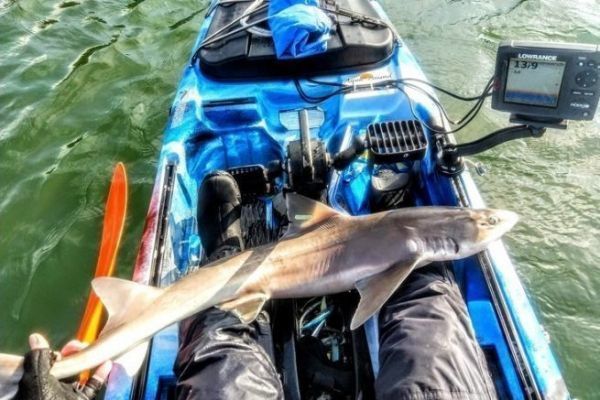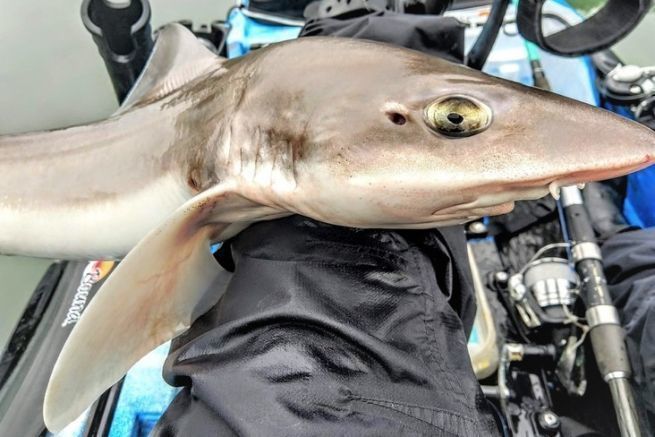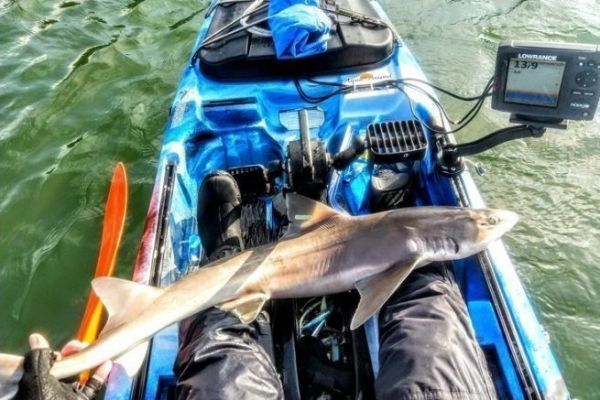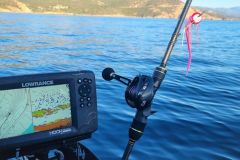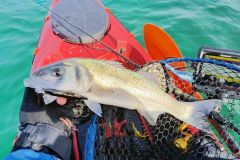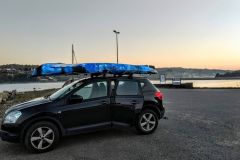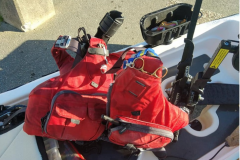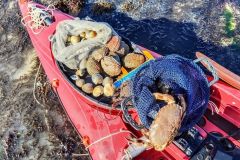The project
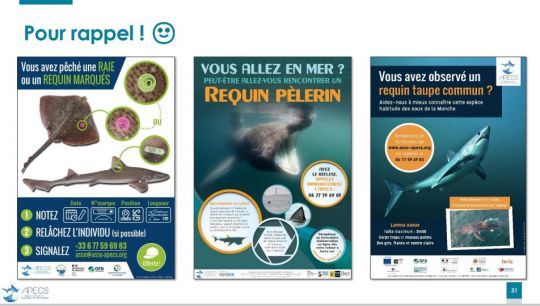
In parallel with the emissola marking actions carried out during Ifremer scientific campaigns and within the Iroise Marine Natural Park (Mer d'Iroise fishermen and elasmobranchs project), APECS, Association pour l'Étude et la Conservation des Sélaciens, has been running a program in Brest roadstead since 2021, mobilizing leisure fishermen and fishing guides. Catches are made with rods, ensuring that the marked outfalls are returned to the water in excellent condition.
Results after two years of follow-up
Some results since 2021 (updated in May 2023):
- 240 marked female emissaries
- 16 recaptures (6.6%)
- Longest distance: 468 km
- Longest follow-up: 394 days
- Height: between 78 and 122 cm (98 cm on average)
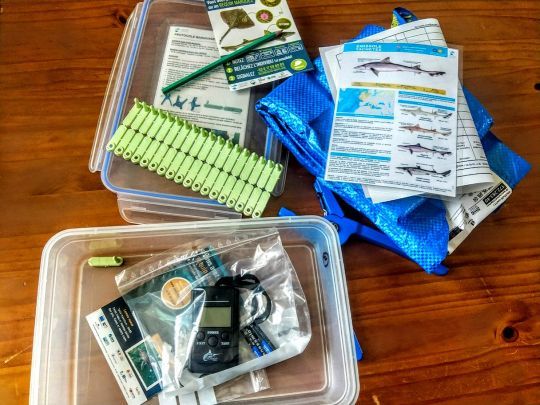
The different aims of the APECS operation
- Improve knowledge of the movements of the spotted shad and try to understand the importance of the Brest roadstead for the species
- Working with recreational fishermen to mark spotted shad in Brest harbour
- Raise awareness among the fishing industry to encourage them to report catches of tagged sharks
First outing in search of emissoles
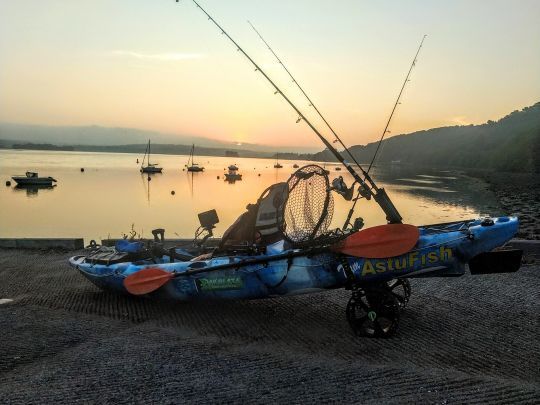
After receiving the equipment, with a slight modification this year - we have to do a weigh-in, which isn't easy in a kayak - I decide to make my first outing. The site is well known: it's at the end of the harbor, in the meanders of the Aulne, a 144 km long Breton river that flows into the Brest harbor. It's an ideal biotope for the crab-eating emissoles. The weather conditions weren't ideal, but at the moment we don't have much choice. The weather's fine, of course, but the northeasterly wind has been steady for 5 weeks now, blowing between 20 and 30 knots every day. The coefficients are 50, which is the only good thing.
As I only fish drifting, there's no need to cast too heavily, a 60-gram pear sinker will suffice. The day before, I went to pick a few green crabs down the road from my house, the king of baits for these fish. 5/0 circle hooks and a 40/00 nylon leader. Slider set-up with a slider taken from each side with stop beads and rubber shock-absorber beads. After an hour of trying to find these emissoles and changing my crab every 10 minutes, I finally found an inspiring loophole. Indeed, emissoles like to put themselves in the deepest depths, and this spot and this 20-metre fault prove to me that I've done the right thing.
After lowering my line, after a few moments, the tip tells me that my crab is being nibbled on below. I take the rod in hand and wait for the emissole to move. This emissole will give me a good fight, as you can see in the video below. Once in the kayak, not without difficulty, I start marking, measuring, checking for signs of injury, sex, and most amusingly, weighing.
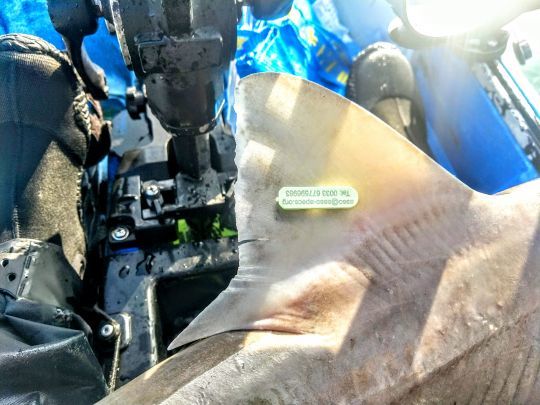
To do this, I equipped myself with a large carp-type bag and the supplied scale. Once the various readings have been taken, it's time to let go. All in all, it takes 3 or 4 minutes, and I reoxygenate it several times during the manipulations. This first mark will be the only one of the day, taken at the moment of the tide shift, the current inversion has brought back the wind, so I don't insist. I've got around twenty marks for this season, so I'll be back soon to cross paths with the beautiful yellow-eyed emissoles of the harbour...
